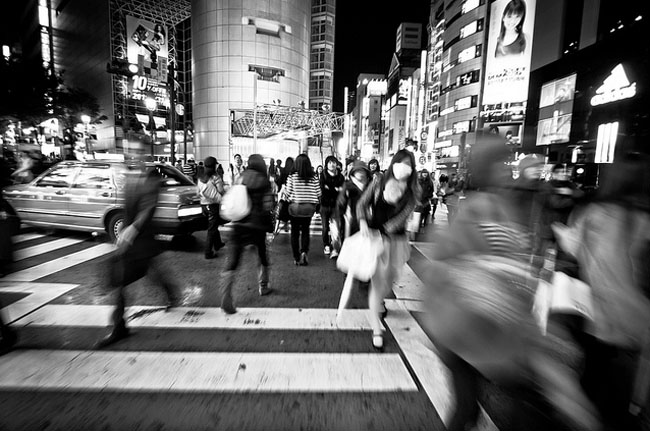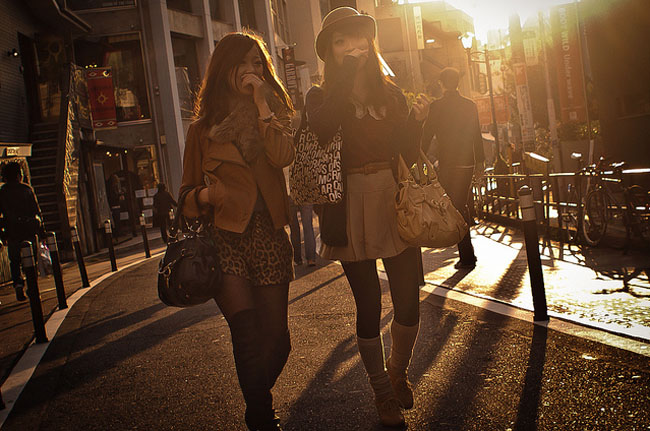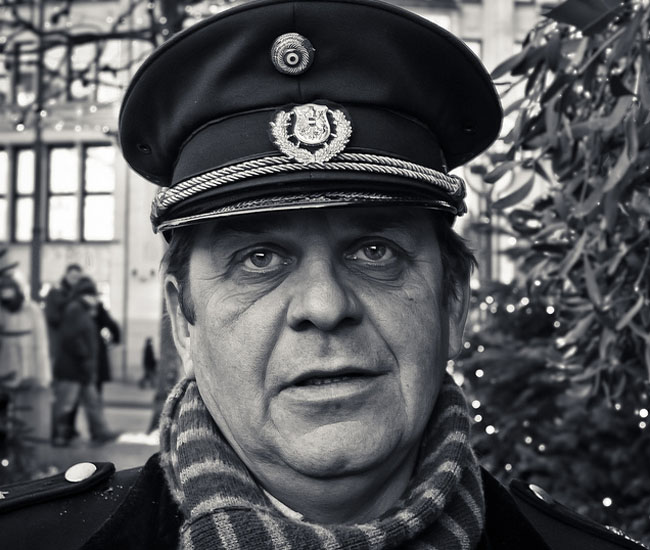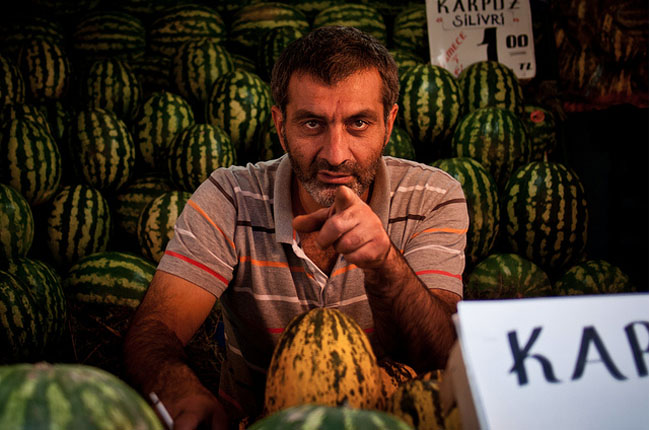I tracked down street photographer Adde Adesokan last year after seeing his Triptychs of Strangers on the Laughing Squid. He was generous enough to reward my mild cyber-stalking with an interview, and what a fun interview.
Adde is remarkably self assured about his work as well as generous with his time. We talked about everything from home countries to travel and how intuition not pixels is the best guide of any photographer’s work.
Leigh: Where are you originally from?
Adde: My parents came to Germany in 1973 from Nigeria.
Leigh: Have you been back to Nigeria to visit?
Adde: Just three times. The last time was 15 years ago. I didn’t go back because of lack of money in my student years. Now that I have money, I want to go elsewhere. Going to see family isn’t the same as a vacation. I would love to travel through Nigeria without too many family obligations.
Leigh: Yes, traveling to see family takes an entirely different energy.
Adde: How did you find me anyway?
Leigh: Through the Laughing Squid. I saw your photos there, followed them to Flickr and thought I had to interview you for Cloudhead.
Adde: Cool. Judging from the photos and the descriptions, what were your first impressions?
Leigh: The Laughing Squid didn’t include your captions. Without words, it made me see how we can distill people down to just a few details and a very rich image still emerges. Your captions on Flickr, though, brought even more life to the images.
Adde: Ok. Cool.
Leigh: How did you start taking these photos?
Adde: I started doing this 2.5 years ago, before that I was studying.
Leigh; What did you study?
Adde: Graphic design. Then I started my own business after. Polar Gold. It’s a company I founded with a friend.
I started street photography in London, September 2010 when I visited a cousin in London and was bored. I always wanted to capture moments in the streets. I was doing street photography before I knew there was a term for it. Then, I had my personal breakthrough in Tokyo.
Leigh: What happened in Tokyo?
Adde: There were so many things to wonder about. I knew I would never be able to transport that feeling just by telling. I had to capture those things with my camera.
Leigh: Your photos have an unreal quality to them. It makes you look at normal every day things differently.
Adde:The speed of a city:

The traditional clothes.

Fashion.

Nightlife

Adde: I took pictures for myself, my friends and my followers. I took pictures for my parents.
Leigh:You took photos so your parents could see what you saw?
Adde: They didn’t travel that much when they were young. It was always easy to tell them the story of my trip with these pictures.
Leigh; Nice. Do your parents see things similarly to you?
Adde: Mmmh. Sometimes. It’s more like they say, “I’ve seen what it’s like. I don’t think I’ll go there.”
Leigh: So it sounds like you’re the opposite. You see it and it makes you want to go.
Adde: Yep. I love to explore, and even if I don’t like to see something more than once, in that moment it can be totally interesting. I think my parents would love to go to Istanbul after what I have showed them. I’d like to shoot more in Hamburg, though.
Leigh: it seems the better you know a place, like Hamburg, the deeper your photos become. While it would be hard for me to choose a favorite, the ones of hamburg really caught my eye.
Adde: Like which photos?
Leigh: Like this one.

Adde: The guy with the hat I met him at a Christmas market. Very friendly guy. The encounter was really short. You could say that guy was one of my first steps into street photography.
Then some guy wrote me a mail asking me to join him for a so called photo walk. He liked my Bali photos and wanted to learn from me. Honestly, I didn’t really know what i was doing. I also didn’t really know what to expect, but I was curious enough to participate. We went to a fleamarket and afterwards I had about ten portraits on my camera. That’s when I thought about starting 100 strangers, but after two weeks of doing headshots, I thought about pushing the idea a little further.
Leigh: Is that what lead to triptychs?
Adde: Yep! A lot of things were done very intuitvely a year ago
Leigh: Do you feel that has changed to any extent?
Adde: Intuitively. That stays the same.
Leigh: Has anything changed?
Adde: I know the controls of my camera better, but curiosity leads me to all my pictures. I believe in photographic skill not a few missing pixels or one missing fps or missing ISO 25K.
Leigh: What camera do you use?
Adde: Olympus Pen EP-1. If you look at the back controls, you’ll see there isn’t that much to worry about.
Oh, so about what lead me to the triptychs?
Leigh: Yes?
Adde: I was really bored by regular street portraits or at least the way I was doing street portraits. Photography is about the moment, and taking street portraits felt like some kind of back door to a satisfying day of photography. It’s too staged. It’s easy and maybe repeatable. Taking five good portraits a day is much easier than five of the moments I love.
Leigh: Because a person can remain still for a portrait, but the moment won’t stay in one place?
Adde: Yeah. And you can do as many portraits as you like, but I wanted to do something that is not that easy to copy.
Leigh: How do you approach a stranger to ask for a portrait?
Adde: I usually start by introducing the project. Where I meet people. Why I choose them and also what I like the most in a particular photograph By the time I explained everything, people already know what I am up to. “And now me?”
Leigh: Why hands and feet? You wouldn’t think that hands and feet define us so well.
Adde: Hands and feet are important. I would say they tell a story, especially hands. Once someone decides to participate, they’re much more willing to try or do things. Just look at Couple II, the gay couple. It takes some guts to do that, to be so open.
Leigh: Do people ever say no?
Adde: Off course, but it’s really rare. I’m very cautious with the people I choose. Never in a group. It seems there is such a thing as group approval. If one person wants to participate but others in the group don’t, it creates a tension. They usually end up moving on.
One of the most difficult thing for me would be to describe my style. How would you describe it?
Leigh: I’d say your work focuses on those moments and details that are easy to overlook, but you capture them in a way that makes the every day more notable. and perhaps more magical. I also like to be careful not to pigeonhole anyone, because i know art develops and changes.
Adde: Nice. thats interesting to hear.
Leigh: But that’s also the kind of thing i notice, so i’m more likely to see that in your work.
Adde: thank you very much, Leigh.
Leigh: No. thank you!
Check out Adde Adesokan’s latest work, including photography from Palestine, on his Facebook page.






[…] the opportunity to work with some really wonderful photographers simply by asking. Jordan Oram, Adde Adesokan, photos from David Jay’s SCAR Project as just a few […]